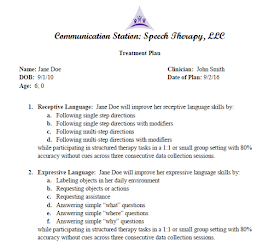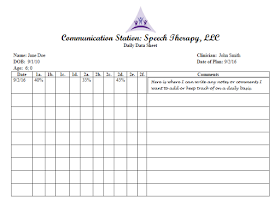Anthony Bashir, Ph.D. and Bonnie Singer, Ph.D. presented on a simple way SLPs, teachers and other school staff can think about, document and support the five core executive function (EF) processes in the school setting.
Note: This blog post is not to replace the presentation of Drs. Bashir and Singer, but to simply share with you some of the information I found helpful and important for my own clinical practice. If you would like hear Drs. Bashir and Singer speak on this subject at your school you can contact them here.
What is an executive function? EF is a brain based process dedicated to: 1) inhibit an automatic response (or action), 2) plan (figuring out "the WHAT" to do), 3) organization ("the HOW" to do it), 4) hold those plans in one's working memory (WM), and 5) maintain self-regulation (of emotions, behavior, cognition, language and learning)
1. Inhibition
2. Planning
3. Organizing
4. Working Memory
5. Self-Regulation
Note: Although these skills all develop over time from birth through to mid-20s (as seen by myelin growth), they do NOT develop in sync (thus supporting that EFs are actually multiple separate functions rather than one large function as previously thought years ago). Rather they develop differently over time. Therefore it is imperative to determine which EFs will inhibit a student's success for individualized tasks in order to address them effectively.
Task Management:
In order to manage a task (either daily living or school/academic activity), we need to use BOTH our EFs AND Self-Regulation (SR) skills SIMULTANEOUSLY in order to achieve success. Yet, what are the EFs and SR skills we need to manage and complete a task? They are not as simple as one might think.
Task management with Core EFs + Self-Regulation skills= Academic Success!
But what do we do for children with poor self-regulation skills? We need to teach our students to do the following:
- establish attainable goals to complete the task
- choose and use effective strategies to reach the goal
- self-monitor, evaluate, mediate one's performance with self-talk (positive)
- maintain motivation (either with internal loci of control or external--outside help from SLP/staff)
- seek support from other resources
When teaching our students effective self-talk, first we much know what type of self-talk they use. Ask them "what's going on in your head right now?" or "what are you thinking?". This will give you a glimpse of where they fall on the self-talk continuum. We will likely have to spend much time on teaching our student's how to use positive self-talk in order to problem solve and reason through situations. In fact, some children need to learn positive self-talk so they can initiate a project/task/activity. The goal being that positive self-talk can assist them in initiating, maintaining and completing the realistic goal.
Self-Talk Continuum
<----------------------------------------------------------------------------------------------------------------------->
Negative Positive
Counter Productive Facilitating
Bashir and Singer shared what I like to call three rules that should govern our thinking when working with children and adults with EF difficulties.
The Rule of Reciprocity:
The Rule of Rapid Deterioration:
The Rule of Demands vs. Capacities:
Stay tuned for the next post where I'll share with you a bit about Bashir and Singer's suggestions regarding treatment for children and adults with EF deficits.
Happy Talking!


































